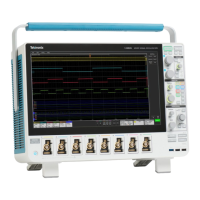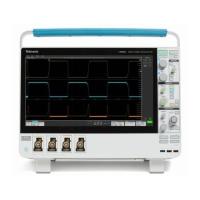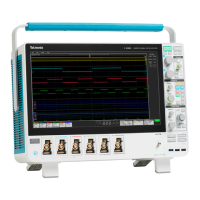Getting Started
Example 1
*RST followed b
y a *LRN? will not return any MATH<x> commands because in
the default state, the instrument does not have any math waveforms. However
querying :MATH:MATH1:DEFinition? will add MATH1 with the default math
expression Ch1 - Ch2. Then the query will return the expected result. Note that if
Ch1 or Ch2 is not active, they will be activated as part of this action. A *LRN
issued after this will return MATH commands in addition to o ther available
commands.
Example 2
*RST followed by :MEASUrement:MEAS3:TYPE? createsameasurement
named MEAS3 and return it's type. Since the default type is Period, you
will get P
eriod as the response. A *LRN issued after this will return all
MEASUrement:MEAS3 commands in addition to other available commands.
Not all c
ommands in these groups start implicit activation. ADDNew, DELete,
and LIST commands do not result in implicit activation.
Creating, deleting, and listing dynamic instances
You can create a new default instance of a dynamic feature by using the ADDNew
command. For example, :MEASUrement:ADDNew "Meas1" will create a new
measurement named Meas1. Meas1 will be a Period measurement since the
default type for measurements is Period. Note that you can change Meas1 type
to any o ther supported type using :MEASUrement:MEAS1:TYPE command.
The D
ELete command deletes the named dynamic instance. For exa mple
:BUS:DELete “B2” will delete a bus named B2 if it exists. You can delete only
one instance at a time. The LIST command returns a list of all dynamic instances
currently in existence. For example, if you have added three measurements named
Meas1, Meas2 and Meas3, :MEASUrement:LIST? returns MEAS1, MEAS2,
MEAS3.
1-8 MSO54, MSO56, MSO58, MSO58LP Programmer

